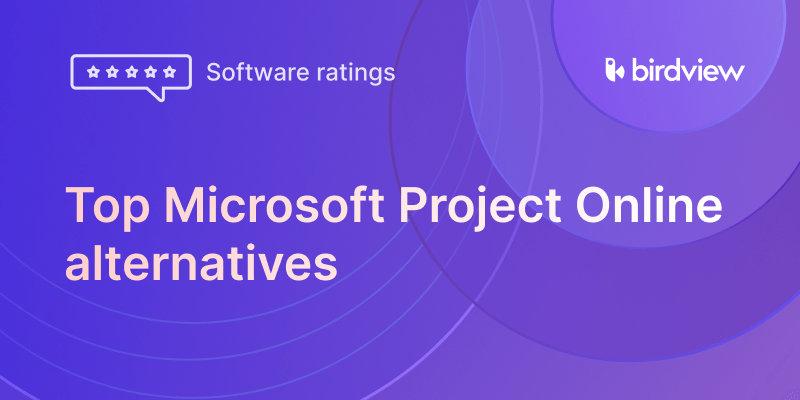Managing a portfolio of projects isn‘t just about juggling multiple tasks–it‘s about making smart, strategic decisions that align with your business goals. Project Portfolio Management (PPM) gives organizations the big-picture view they need to prioritize the right initiatives, allocate resources wisely, and deliver results. But even experienced teams fall into traps that can lead to poor performance, missed deadlines, or wasted resources.
“According to PMI, aligned projects are 57 % more likely to achieve their business goals, 50 % more likely to finish on time, and 45 % more likely to stay within budget.” ProProfs
In this guide, we‘ll look at the 8 most common mistakes in project portfolio management and how to avoid them. Whether you‘re a PMO consultant, project director, portfolio manager or building a new PMO from scratch, these insights will help you build a more resilient, strategic portfolio.
What is the difference between project and portfolio management?
Project management focuses on delivering individual projects on time, on scope, and within budget. Portfolio management looks at the bigger picture: which projects should we do, and how do they align with business strategy?
While project managers focus on execution, portfolio managers focus on prioritization, resourcing, and alignment. Both roles are critical–but they solve different problems.
PPM mistake 1: Managing projects in isolation
What goes wrong: Many teams still manage projects separately–each with its own goals, tools, timelines, and resource pool. Without portfolio-level oversight, it’s hard to see how projects impact each other or the business as a whole. This siloed approach leads to duplicated efforts, missed risks, and conflicting priorities.
Example: A marketing agency runs 10+ client campaigns at once. One team unknowingly books the same design resource as another, causing delays in both projects.
How to avoid it: Adopt a centralized portfolio view. Use PPM tools that let you monitor all active and upcoming projects in one place. This helps you spot overlaps, dependencies, or risks early on. With Birdview PSA, for example, managers can see a real-time snapshot of project timelines, resource usage, and delivery risks across the full portfolio–helping them make smarter decisions at every level.
💡 Tip: Don‘t wait for problems to pile up–proactively scan your portfolio each month to stay ahead of issues.
PPM mistake 2: Poor alignment between projects and business goals
What goes wrong: Not every project deserves a green light. If your portfolio includes work that doesn‘t clearly support strategic goals, you risk spreading your team too thin and missing out on higher-impact initiatives.
Example: An IT services firm continues supporting a legacy client system with little revenue potential, instead of reallocating staff to more profitable, strategic work.
How to avoid it: Define clear evaluation criteria before approving new projects. Does it support a strategic initiative? Improve efficiency? Deliver ROI? Establish a scoring model to rank proposed projects based on business value, risk, and resource demand.
“Research by BrightWork shows that top-performing organizations complete 96 % of strategic initiatives, compared to just 61 % for low performers–largely due to better project alignment.” mpug.com
💡 Tip: Use intake forms to collect key project information upfront–like goals, required resources, and expected outcomes. Tools like Birdview PSA allow organizations to standardize this process and score initiatives based on predefined criteria, ensuring the right work gets prioritized.
🔗 Learn more: How to build a project intake process that works →
PPM mistake 3: Inconsistent resource planning
What goes wrong: Without a centralized view of who is working on what, teams easily fall into overallocation or underutilization. The result? Burnout, delays, and missed deadlines.
Example: A senior consultant is booked at 130% capacity across three projects, while another with similar skills is only 50% utilized.
How to avoid it: Implement resource capacity planning at the portfolio level. Track team availability, skill sets, and current workloads before assigning new tasks. A tool like Birdview PSA helps balance workload across roles and departments by giving you visual dashboards of availability, conflicts, and overbooking.
💡 Tip: Forecast resource needs months in advance. Don‘t just look at current availability–look at trends, planned PTO, and pipeline projects. Build flexibility into your planning to handle sudden changes or urgent requests.
🔗 Read our guide on resource capacity planning →
PPM mistake 4: Lack of financial visibility
What goes wrong: It‘s easy to lose track of project costs when budgets are tracked in separate spreadsheets or only reviewed after the fact. This makes it hard to understand profitability at the portfolio level–or to correct course when expenses start rising.
Example: A consulting firm finishes the quarter under budget overall, but two large projects ran significantly over cost–wiping out profit margins.
How to avoid it: Integrate budgeting and forecasting into your PPM process. Set financial baselines for each project and monitor actuals versus planned costs as work progresses. Birdview PSA lets PMOs track project budgets, rate cards, and actual expenses in real time–helping them make mid-course corrections instead of post-mortem analyses.
💡 Tip: Include cost performance indicators (like Cost Performance Index or Profit Margin) in your dashboard views. Use these to guide regular reviews and steer the portfolio toward higher profitability.
PPM mistake 5: No clear intake and prioritization process
What goes wrong: When anyone can submit a new project–and there‘s no clear process to evaluate or approve it–teams get overwhelmed. Priorities shift constantly, and strategic focus is lost.
Example: A product development team keeps pausing strategic roadmap work to handle “urgent” requests from other departments–none of which have been formally approved.
How to avoid it: Standardize the project intake process. Create a formal intake form, approval workflow, and review cycle. Use prioritization frameworks like MoSCoW (Must-have, Should-have, Could-have, Won‘t-have) or RICE (Reach, Impact, Confidence, Effort) to score and rank new work.
💡 Tip: Make intake transparent. Let stakeholders see the status of their requests and understand why something was approved, delayed, or rejected. This builds trust and keeps everyone focused on what matters most.
PPM mistake 6: Failing to monitor performance at the portfolio level
What goes wrong: You can‘t improve what you don‘t measure. Many organizations focus heavily on project-level performance (time, scope, budget) but don‘t monitor how the portfolio is performing as a whole.
Example: All projects are marked “on track” individually, yet the organization is still behind on revenue targets and strategic outcomes.
How to avoid it: Track portfolio-level KPIs alongside individual project metrics. This includes profitability, resource utilization, strategic goal alignment, and delivery risk. Use a centralized dashboard to track progress and spot red flags early.
💡 Tip: Schedule quarterly portfolio reviews with leadership to assess how project execution is contributing to larger business goals. Tools like Birdview PSA offer executive dashboards that roll up metrics across the portfolio–giving leaders the visibility they need to course-correct early.
PPM mistake 7: Not adapting the portfolio to change
What goes wrong:
Markets shift. Client needs evolve. If your portfolio is set in stone, you‘re likely working on outdated priorities while missing new opportunities.
Example: After a competitor launch, a firm continues investing heavily in a declining service line while failing to ramp up new offerings.
How to avoid it: Build flexibility into your portfolio governance. Use regular reviews, scenario planning, and “what-if” modeling to adjust plans as needed. When circumstances change, pause or kill underperforming projects to free up resources.
💡 Tip: Create a rolling-wave planning model. Instead of locking in your project roadmap a year ahead, revisit it every quarter. With tools like Birdview PSA, you can simulate different resource and project combinations to test outcomes before making changes.
PPM mistake 8: Weak portfolio governance
What goes wrong:
Without clear roles, responsibilities, and approval workflows, portfolio decisions become inconsistent. Projects get approved based on influence, not impact.
Example: A company greenlights a project based on a senior executive’s request–without assessing strategic fit, budget, or resource availability.
How to avoid it: Establish a governance framework for your portfolio. Define who approves projects, sets priorities, and monitors compliance. Create a portfolio steering committee with representation from PMO, finance, operations, and leadership.
💡 Tip: Document your governance model. Use approval gates, role-based permissions, and standardized review cycles. Birdview PSA supports this with customizable approval workflows and stakeholder dashboards.
Final thoughts
Project Portfolio Management isn‘t just about getting things done–it‘s about doing the right things. By avoiding these common mistakes, PMO consultants and project leaders can build more adaptive, aligned, and profitable portfolios.
If you’re looking to improve visibility, standardize your intake process, or balance your team‘s workload, platforms like Birdview PSA can help you manage your portfolio more effectively–without adding more complexity.
See Birdview PSA in action or book a strategy call with our team
or
🔗Read more about PPM:
Explore our full Project Portfolio Management Guide →
Top PPM benefits for service businesses. Tips & examples →
Best Project Portfolio Management Software 2025 →
Frequently asked questions
What is the biggest mistake in project portfolio management?
Failing to align projects with business goals. If your portfolio isn‘t delivering strategic value, even “on time” projects can hurt your bottom line.
How often should I review my project portfolio?
Ideally, monthly or quarterly. This allows for fast course correction and better alignment with changing priorities.
What‘s the difference between project management and portfolio management?
Project management focuses on a single initiative. Portfolio management looks across all initiatives to ensure the right mix of work is being delivered for maximum business value.
Can small businesses benefit from PPM tools?
Absolutely. Even with a small team, having visibility into budgets, priorities, and capacity can greatly improve outcomes.



